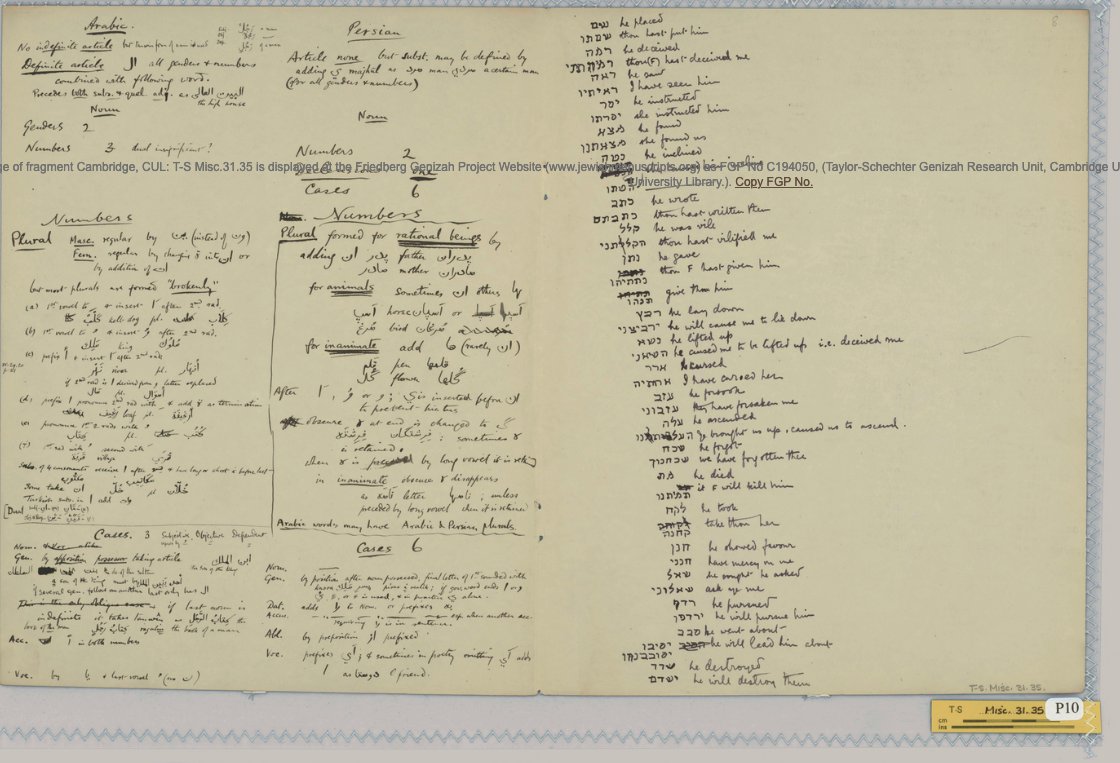
1/🧵So there’s this box in the Genizah Research Unit at @theUL. It’s labelled “Worman Archive.” It’s supposed to be full of stuff associated with Ernest James Worman, a librarian who catalogued the #Genizah collection 120 years ago. Yesterday I found out that’s not all true. 

2/See, Worman’s story is actually quite tragic. He was born in 1871 to a working-class #Cambridge family. That’s not the tragic part. In 1895, @theUL hired him as a “Library Assistant.” He then taught himself Arabic and Hebrew to catalogue the #Genizah manuscript collection. 

3/After 1902, Worman was the main employee at the library working on this collection. Solomon Schechter, the man responsible for bringing the collection to Cambridge in the first place, had left for America, leaving Worman more than 150,000 fragments to tend to (almost) alone. 

4/He began to keep notebooks where he described each manuscript by hand. 5 of these notebooks survive with our “Worman Archive.” For many manuscripts, Worman’s descriptions remain the only catalogue data available. 



5/Evidently, Worman he was paid by the hour, and he kept track of the hours he worked in the back cover his notebooks. Here’s his log from 1907 to March of 1908. You can see where his supervisor approved it in red ink. It seems he was paid about £1/hr, which is around £9 today. 



6/The archive box also shows us that Worman’s process was not always so organized. Many descriptions are on loose sheets or slips of paper, sometimes just whatever Worman had on hand at the time. For example, these ticket stubs from the Cambridge Guildhall: 



7/If you’re wondering what kind of paper he preferred, and I know you are, most of it is the very thin “Avonbrook Fine.” For serious stuff, he used “Extra Hard Sized Vellum,” which is neither vellum nor really that hard. "Lion Brand" was also popular in the library at the time. 





8/Besides Worman’s catalogues, a lot of his other papers do survive in the archive, including publishers’ proofs of articles he wrote. Apparently, back in those days, authors received proofs in the form of long rolls, like this one sent by the Jewish Chronicle (feat. my foot). 

9/In May of 1909, Worman contracted “acute pulmonary tuberculosis.” He died 4 weeks later at his home in Cambridge. He was 38. 

10/Worman’s premature death is one reason the “Worman Archive” is so disorganized. The surviving library staff did their best to sort the papers left at his desk, but these included his own transcriptions alongside medieval manuscripts. Like this one that slipped through: 



11/The opposite also happened. Some of Worman’s personal notes were actually added to the Taylor-Schechter collection by accident. They now have T-S classmarks and everything. @RJWJefferson 

12/Worman’s notebooks were left incomplete. One of them - apparently the last one he worked on - is still mostly blank and includes an inscription on the inside cover. It was copied in 1910 by the same supervisor who used to approve Worman’s time cards: 

13/Somehow, in the last few decades, wherever Worman’s papers were kept in the Genizah Research Unit became a receptacle for other office-related detritus. Like this letter from 1917, which @SolomonBenJudah says is very important to the discovery of Hebrew poetry by Yannai: 

14/There are also lots of old photos of manuscripts, letters from the 1940s and 1980s, and 2 offprint articles from the University of Tiflis. Most of this stuff was identified years ago by Sarah Sykes, our office manager and the linchpin of the whole GRU machine. 

15/One last thing I found amusing: a folder of memos about catalog orders, written by my former teacher, Geoffrey Khan. This was 1989, way before he became a big-shot Regius Professor. They come with a note from Sarah: “should be shredded - account numbers” which, yeah, probably. 

16/16 So that’s Ernest Worman and the strange contents of his archive. Genizah research in Cambridge really declined after he died, with the whole sorting project being shut down until the 1950s. I wonder what would’ve be different if he’d had 30 more years at the library.
• • •
Missing some Tweet in this thread? You can try to
force a refresh







